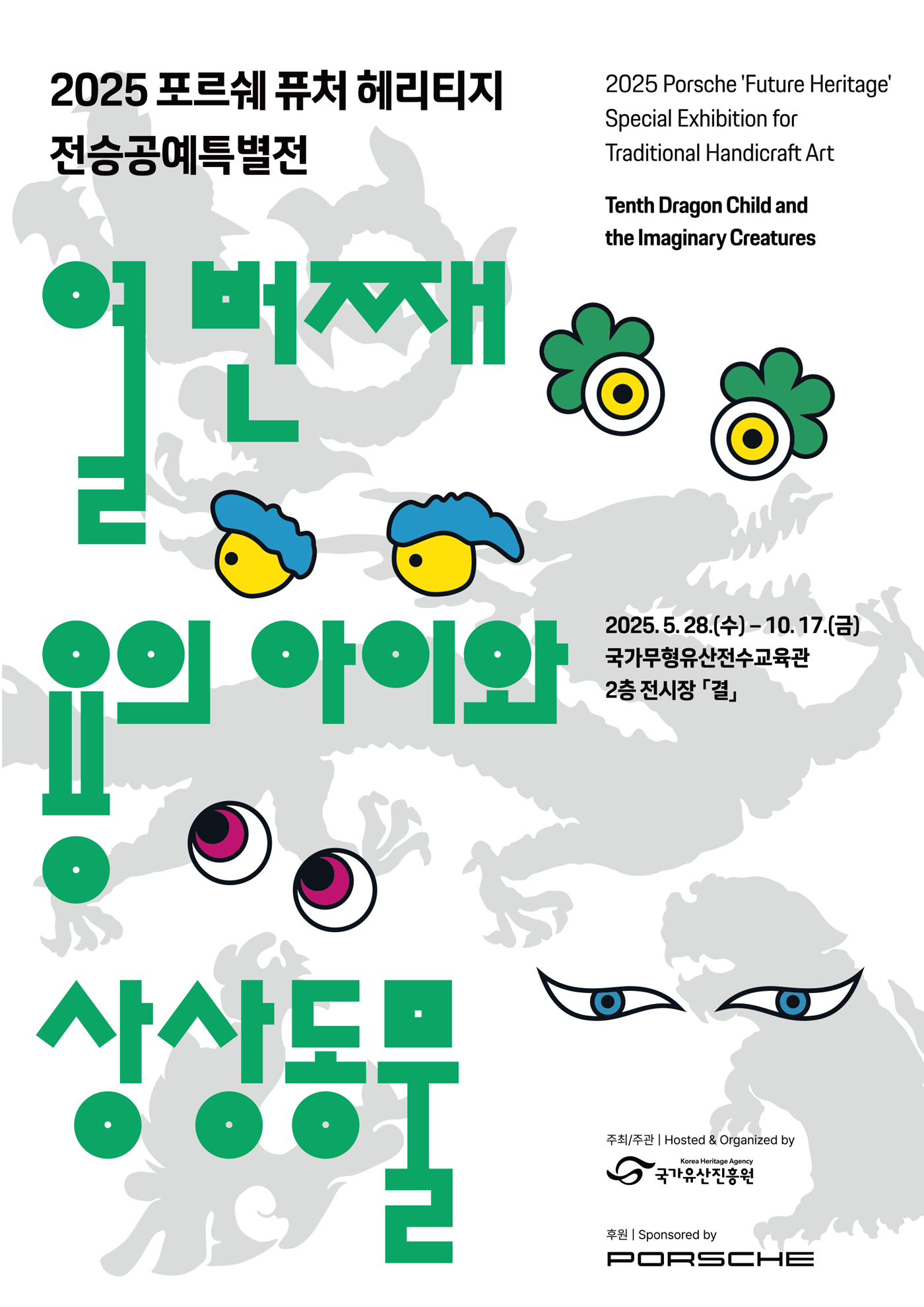NEWS
NEWS

Listen to the Story of the Nine Children of the Dragon and the Mystical Imaginary Creatures.
○ Since ancient times, people have expressed their dreams and hopes for life through the symbolism of animals. Traditional crafts often feature animal motifs, each carrying its own unique story. By listening to the tales of the nine children of the dragon and other mysterious imaginary creatures, what once seemed distant or difficult about traditional crafts may begin to feel more approachable.
Imagine the Tenth Child of the Dragon.
○ Each mysterious creature carved into traditional crafts carries its own unique story. Through this exhibition, we invite you to reflect on the characters and tales behind these animals. As you explore, let your imagination take flight—what would the tenth child of the dragon look like? What stories might you create as its successor? Let yourself dream, wonder, and become part of the legend.
1. About Exhibition
[Dragon and Stories of Nine Children of the Dragon]
○ The Dragon is a mythical creature imagined and shaped by human culture. In the ancient medical text Compendium of Materia Medica Bencao Gangmu , the dragon’s appearance is described as follows: “Its head resembles a camel’s, its horns a deer’s, eyes like a rabbit’s, ears like an ox’s, neck like a snake’s, belly like a large clam (shin), scales like a carp’s, claws like a hawk’s, and its paws like a tiger’s. Its back is covered with 81 scales...”It is a creature composed of the finest traits from different animals, and thus, truly worthy of being called the greatest of all beings. Among animals, the dragon stands as a leader, a symbol of supreme power and ability.
○ An ancient text titled Jinju-seon The Pearl Ship tells of the dragon having nine children, each with a unique character. They are: Bihi贔屭, Yimoon螭吻 Porwe蒲牢, Pye-an狴犴 Docheol饕餮, Gongha蚣蝦, Aeja睚眦, Sanye 狻貎, and Chodo椒圖. Like other imaginary creatures, the appearances of the dragon’s nine children vary depending on the era or the artwork in which they are depicted.
[Stories of Four Mystical Animals]
○ In the ancient text Book of Rites Yegi,禮記 , there is a reference to four mystical animals regarded as divine beings: the dragon, girin, phoenix, and turtle. These are collectively known as the ‘Four Sacred Creatures saryeong, 四靈’, and it is said they appear only in times of great peace and harmony. The girin represents deep faith and loyalty; the phoenix governs with wisdom; the turtle can divine fortune and misfortune; and the dragon excels in the power of transformation.
2. Program
<Create Your Own Imaginary Animal Glasses>
○ Choose a pair of glasses inspired by the eyes of one of the dragon’s nine children, available at the exhibition entrance, and wear them as you tour the exhibition. Then, in the craft area, design and create your own unique “Tenth Dragon Child” glasses to take home.
<Live Sketch: Imaginary Adventure>
○ At the final “Live Sketch” corner of the exhibition, color in one of the imaginary animal characters drawn on paper. Then, scan your artwork to see your colored creature come to life in 3D on screen. Bring your creation to life in vibrant color, and help complete this whimsical, shared world of imagination.
3. Period : 2025. 5. 28.(Wed) ~ 10. 17.(Fri)
4. Opening Hours : 10:00 AM to 7:00 PM(Closed on Mondays, Chuseok day)
5. Admission Fee : Free
6. Location : 406, Bongeunsa-ro, Gangnam-gu, Seoul, Republic of Korea
○ Line 9, Bundang Line Seonjeongneung Station Exit 3
7. Hosted & Organized by : Korea Heritage Agency
8. Sponsored by : PORSCHE
9. Contact : +82-2-3011-2155
<About Korea Heritage Agency>
Established in 1981 by the Korea Cultural Heritage Service and currently managed and operated by the Korea Heritage Agency, the National Intangible Heritage Training Center is a dedicated cultural space for preserving and passing down Korea’s intangible heritage. It serves as a hub for the transmission of traditional skills and knowledge, while also offering a wide range of performances, exhibitions, and hands-on experiences. This space invites the public to engage with and enjoy the richness of Korea’s traditional culture.







